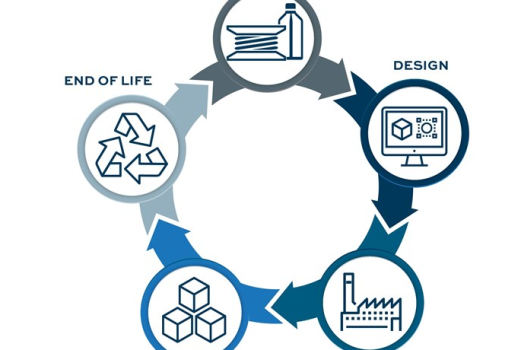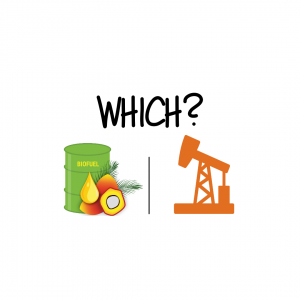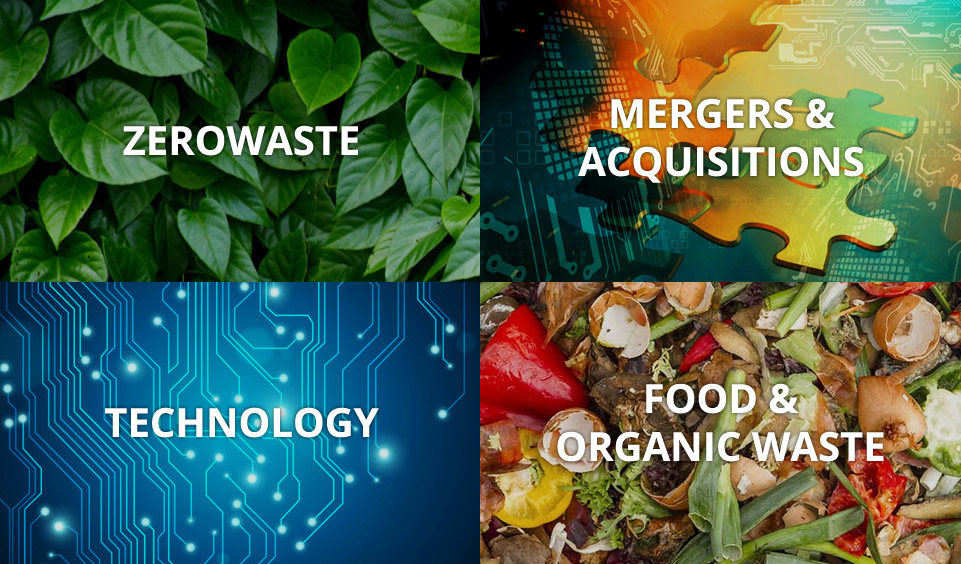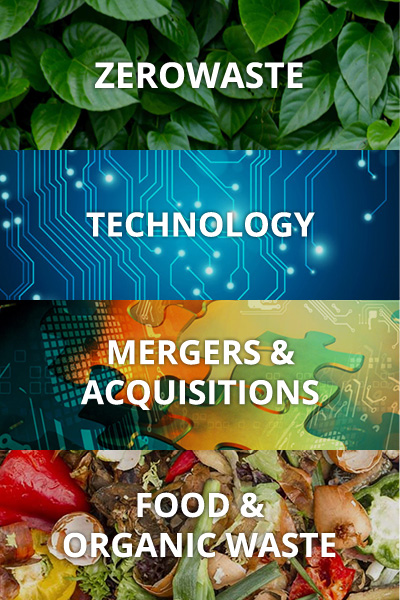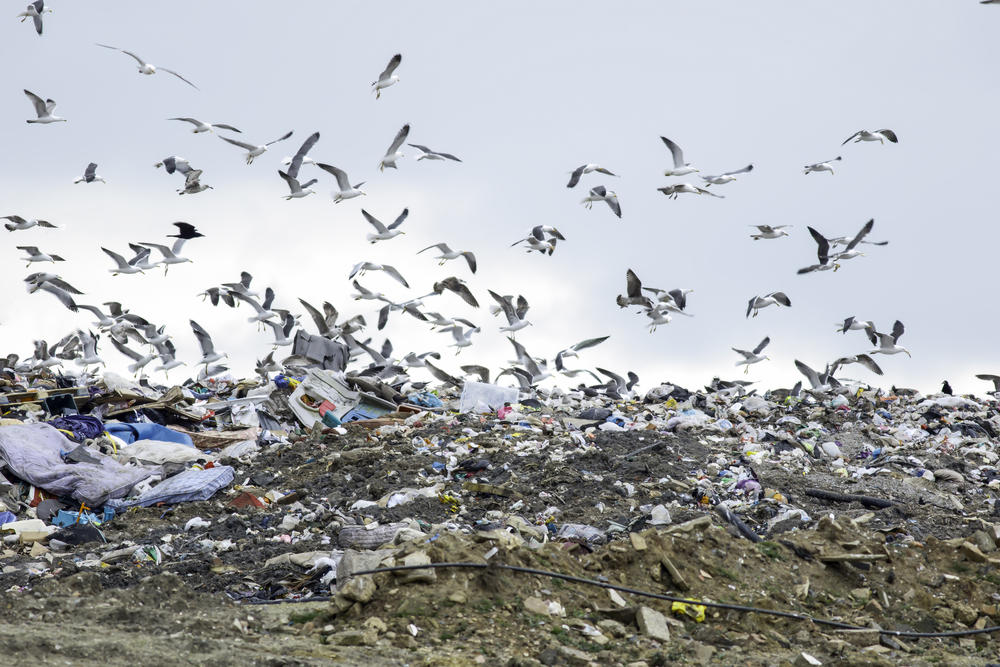
Pests at landfills can wreak havoc on operators, causing problems such as nuisances to neighbors, operational complications and health concerns. Attracted to the yard and food waste commonly found at solid waste sites, pests ranging from rodents to birds will linger at landfills, leaving behind trash in nearby yards and damaged liners.
“I think the most important part of [pest control] is understanding the biology of the organisms you’re dealing with, whether it be deer or birds, and knowing when they’re going to give you the biggest problems, and then act accordingly or plan for that,” says Shane Latimer, project director for SCS Engineers, Long Beach, California.
According to Latimer, mitigating pest problems should always start with keeping up with site hygiene. By minimizing the amount of exposed waste and working in smaller areas, he says a site is less prone to having severe pest issues.
“The main thing that we see at [well-maintained] landfills is proper daily cover and good waste management in terms of ensuring that the waste is taken care of on a daily basis and not having such a large working face,” he says. “The smaller your working face, the smaller the area the organisms can get into. They’re after food, so the smaller the food area, the less of a draw there is. The other thing is if you have compactors actively working a small area, they’re more likely to deter the pests than when you have a large area that is basically open and undisturbed so the [animals] can feed in an undisturbed way.”
“The main thing that we see at [well-maintained] landfills is proper daily cover and good waste management,” –Shane Latimer, project director for SCS Engineers
Of the many organisms frequenting landfills for food, Latimer says birds are the most common problem. With high mobility and their tendency to travel in large numbers, birds can get in and out of waste fairly easily, picking up and hauling trash into neighboring communities near waste sites.
In addition, birds feeding at landfills tend to leave excrement throughout the site and surrounding areas. With the potential to carry more than 60 transmissible diseases, birds and their fecal matter pose a risk to landfill workers, creating a workplace hazard.
“In Oregon, for instance, E. coli is a stormwater constituent that is regulated, and is often associated with birds being at the landfill and utilizing waste as a food source,” Latimer says. “[Birds] will, what they call ‘loaf,’ which means they’re hanging out or using the landfill for roosting and that sort of thing. So, E. coli from them gets back into the stormwater and creates a compliance problem.”
THE USE OF FALCONRY
To combat these bird-related issues, an operator can use several methods, such as falconry, lasers and propane cannons. Falconry, which is an ancient practice where falcons or other birds of prey are trained to hunt or scare the birds, is considered the gold standard.
“In modern times, falcons used for bird control are pretty much trained to circle the area and deter the birds away, although they will occasionally make a kill,” says Latimer. “[Birds] don’t like seeing their friends die at the talons of some falcon, so they’re less likely to be there.”
Kort Clayton, the owner of Portland, Oregon-based Integrated Avian Solutions and master falconer, says falconry is the best approach to managing bird populations when they concentrate in unnatural ways, such as at landfills.
“When several thousand seagulls are at a landfill and that becomes their primary food source, it’s not good for them, and it’s not healthy at all. The right thing to do is to find a way to break that up and force them to go live natural, healthy lives—and you can do that with falconry,” he says.
According to Clayton, the first step when creating a falconry program is to have an expert come out and visit the site. Some factors he takes into consideration when visiting a site are the nature of the birds, the quantity of birds and whether it’s a seasonal or chronic problem.
“We try to figure out what [the site] really looks like and what they’ve done in the past,” he says. “If nothing has been done, then that’s one thing to factor in, but if they’ve already invested in managing the problem and have been unsuccessful, then we have a better understanding of what our starting point is.”
Clayton says a major benefit of falconry is that the birds don’t habituate to the birds of prey, or raptors, in the way they habituate to other forms of bird abatement.
“The raptors are always a real threat, and the birds instinctively understand that,” he says. “There is a predator in their space, and whether or not it’s chasing them, they’re intimidated by it and are cautious about it. If it does chase them, then they become really cautious about it and respond reliably every time the raptor is there. Over time, it can change their behavior.”
But while falconry is considered the most effective tactic for some applications, it’s not a perfect solution for every landfill.
“[Falconry] is really only for operations that have chronic and unmanageable problems,” says Clayton. “By all means, if you can manage your bird problem with a propane cannon or a laser system, you should do that because it will cost you less. But, for our clients, that won’t work.”
Clayton recommends for landfills struggling with bird challenges, to first start with the simple, cheaper solutions to determine if they are effective. If those methods don’t work and the problem persists, then falconry may need to be the next step.
DIFFERENT OPTIONS
For landfill operators seeking a less costly solution for bird control, Latimer says lasers can be a great option.
“We are working with a small landfill in southwestern Oregon that had major bird problems, which were causing an E. coli compliance problem. The site had investigated various methods to control the birds, including falconry, but they found it to be relatively expensive. At the time, I had been tracking the use of lasers to control birds at various agricultural sites, and it looked like the time had come to see if lasers might be effective for controlling birds at landfills,” says Latimer.
With typical costs for an automated laser estimated to be around $10,000 to $12,000, the high-intensity beams can be managed by landfill personnel and usually run a set pattern to deter birds from a certain area.
“The group that provides our lasers is currently looking into some deep learning techniques, kind of like artificial intelligence, where they are training a computerized system to actually follow the birds around the site. The system would know what a bird is and what it looks like, so the laser would be aimed at those birds in particular rather than just running a [predetermined] path,” Latimer says.
For now, though, Latimer says running patterns seems to work really well for most operators. When used at the Oregon site, he says the landfill experienced an immediate pest-control improvement, effectively cutting the number of the bird species inhabiting the site down to almost zero.
“It’s not a silver bullet, but I think lasers will play a major role in the relative linear future of controlling birds at landfills,” Latimer says.
As for propane cannons, these pest deterrents have been used to keep birds off corn and other commodities in the agricultural industry for a long time. The stationary “sound guns” cost roughly $300 to $400 and utilize propane gas ignition to create a loud shot-like sound to scare away birds, making it an easily accessible solution for bird control from a price and operational standpoint.
“The mechanism allows a very small amount of propane into the barrel of the ignition chamber of the cannon, and then it ignites that and makes a boom,” says Latimer. “It’s just on a timer, so it shoots one off every once in a while, but sometimes they’ll do three in a succession or break it up a little bit. What you don’t want is for birds to habituate to any of these control methods, and that’s one of the biggest problems—you want to make sure that you put together a program that won’t become useless in the next month or year because the birds just get used to it.”
This article originally appeared in the Nov. Dec. issue of Waste Today. The author is the assistant editor of Waste Today and can be reached at [email protected].
